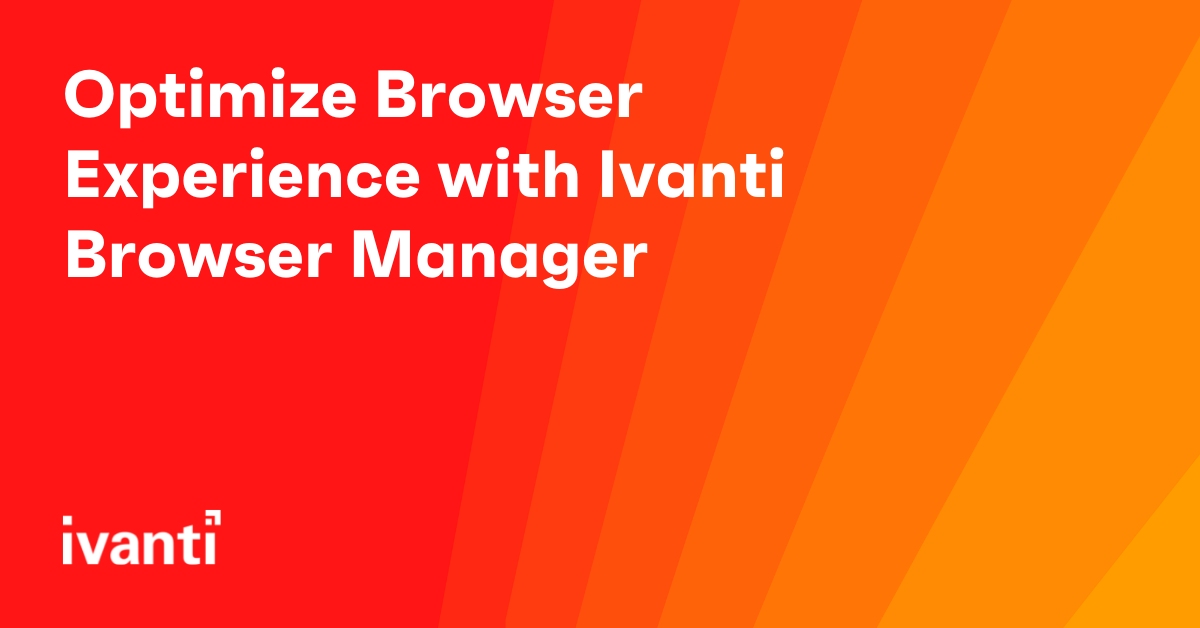Optimize Browser Experience with Ivanti Browser Manager
What do you picture when you think of the Everywhere Workplace? Your home office, beloved pet curled up at your feet, coffee brewing in the next room? Or maybe working in the mountains or at the seashore or some other idyllic location?
There’s more to the Everywhere Workplace than exotic work settings.
Just as new remote work models have changed our expectations about our physical workplace, digital transformation and the move to the cloud have changed where – in the digital realm – our work gets done. With the rapid growth of SaaS systems, we are spending a lot less time on desktop computer applications and a lot more time in cloud-based apps, most often delivered by a web browser.
Why browser-based applications pose challenges for IT
This is an easy adjustment for employees, who are used to browser-based consumer apps. But for IT teams, providing a consistent and positive employee experience is now even more challenging. IT teams must consider browser usage, data and synchronization for all users: local, mobile and remote.
There are two primary challenges associated with browser-based applications.
First, most enterprises have a mix of physical and virtual desktops to help centralize management and upgrades, especially for task-based workers. Because they’re designed for physical desktops, web browsers tend to consume a lot of resources and waste a lot of storage space in virtual desktop infrastructures. This can lead to a negative impact on the user experience.
Next, each web browser on the market — Chrome, Edge, Firefox — behaves differently. Some web applications run correctly only on a particular browser. Still, most of us have a preferred browser we default to and would rather use than one that’s been assigned us. It’s not unusual for a user to end up needing multiple browsers on their desktop to do their job. This not only increases resource consumption, but it also degrades the user experience when each browser has its own sets of shortcuts, cookies and other productivity features.
Synchronize and manage browser data within Ivanti User Workspace Manager
Last year, we introduced Ivanti Browser Manager as a standalone solution to address these challenges. Ivanti Browser Manager provides:
- Synchronization of favorites across all browsers
- Management of browser-generated data
- Redirection of defined URLs to a browser of your choice
The solution also supports resource blocking to enable the blocking of ads and other unwanted web traffic.
These capabilities ensure a consistent experience across all browsers, while making sure that users never access a web app in the wrong browser environment. Ivanti Browser Manager brings many of the advantages of Ivanti User Workspace Manager (UWM) to browser environments. We’re pleased to announce that Ivanti Browser Manager has been incorporated into the Ivanti User Workspace Management suite, along with Ivanti Application Control, Ivanti Environment Manager, Ivanti Performance Manager and Ivanti File Director. Now you can access Ivanti Browser Manager as part of your UWM solution to enable an optimized user experience that provides:
- Faster login times
- Lower infrastructure costs
- Multi-browser support
- Complete cookie management
- Easy synchronization of favorites
- Browser redirection
Learn more by downloading the data sheet, or schedule a demo of UWM and see how Ivanti Browser Manager can deliver these benefits to your users.

